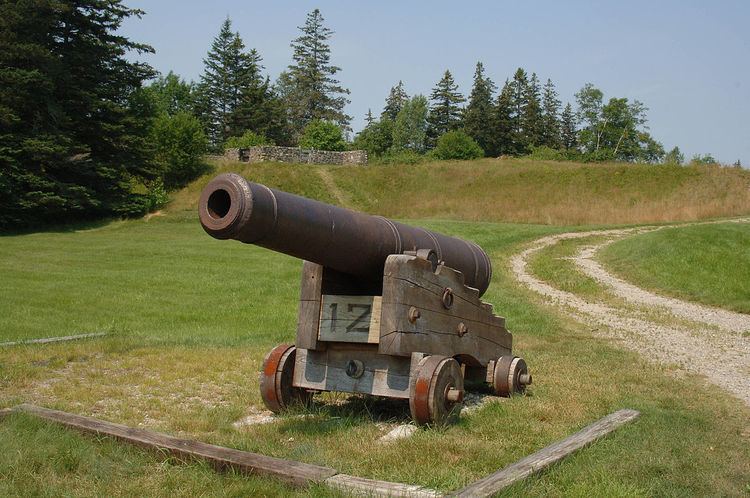Built 1779 (1779) Opened 1779 Added to NRHP 30 December 1969 | NRHP Reference # 69000007 Area 3 ha | |
 | ||
Similar Fort Madison, Wilson Museum, Dice Head Light, Castine Historical Society, Fort Pentagouet | ||
Fort George (also sometimes known as Fort Majabigwaduce, Castine, or Penobscot) was a palisaded earthwork fort built in 1779 by Great Britain during the American Revolutionary War in Castine, Maine. Located at a high point on the Bagaduce Peninsula, the fort was built as part of an initiative by the British to establish a new colony called New Ireland. It was the principal site of the British defense during the Massachusetts-organized Penobscot Expedition, a disastrous attempt to retake Castine launched in response to the British move. The British re-occupied Castine in the War of 1812 from September 1814 to April 1815, rebuilding Fort George and establishing smaller forts around it, again creating the New Ireland colony. The remains of the fort, now little more than its earthworks, are part of a state-owned and town-maintained park.
Description and history
Fort George is today a roughly square earthwork, about 200 feet (61 m) on each side, with bastions at the corners that project out an additional 40 feet (12 m). These works are for the most part about 10 feet (3.0 m) in height, although the easternmost bastion is 20 feet (6.1 m) high. Features of the fort that have not survived include a palisade, moat, and gateway. The fort is one of a series of defenses erected by the British in 1779, which notably included the digging of a canal across much of the neck separating the Bagaduce Peninsula from the rest of the mainland.
Castine is set at a strategically significant location near the head of Penobscot Bay, and was a point of conflict at several times between the 17th and 19th centuries. Pursuant to plans for establishing a military presence on the coast of Maine as well as the colony of New Ireland, a British force led by General Francis McLean arrived off Castine in June 1779, seized the town, and established Fort George and other fortifications in the area. The state of Massachusetts, of which Maine was then a part, responded by raising a large militia force, which in an operation known as the Penobscot Expedition, disastrously failed in its attempt to dislodge the British. The fort was not abandoned by the British until 1784, and was not re-used by the United States until after the War of 1812.
The British re-occupied Castine in the War of 1812 from September 1814 to April 1815, again establishing New Ireland. They rebuilt Fort George, renamed the captured Fort Madison (aka Fort United States) as Fort Castine, and built Forts Furieuse, Gosselin, Griffith, and Sherbrooke. They also refurbished the peninsula's canal defense line. They withdrew after the cessation of hostilities, and following a brief period of American use, the fort was abandoned and demolished in 1819.
The state of Maine acquired the fort in 1940, and twenty years later provided funds to rebuild a magazine with other improvements. The site of the fort's remains is now a park of 7 acres (2.8 ha), owned by the state and maintained by the town. The site was listed on the National Register of Historic Places in 1969. Fort George is the site of Majabigwaduce, the location for Bernard Cornwell's 2010 book The Fort, which is about the Penobscot Expedition.
